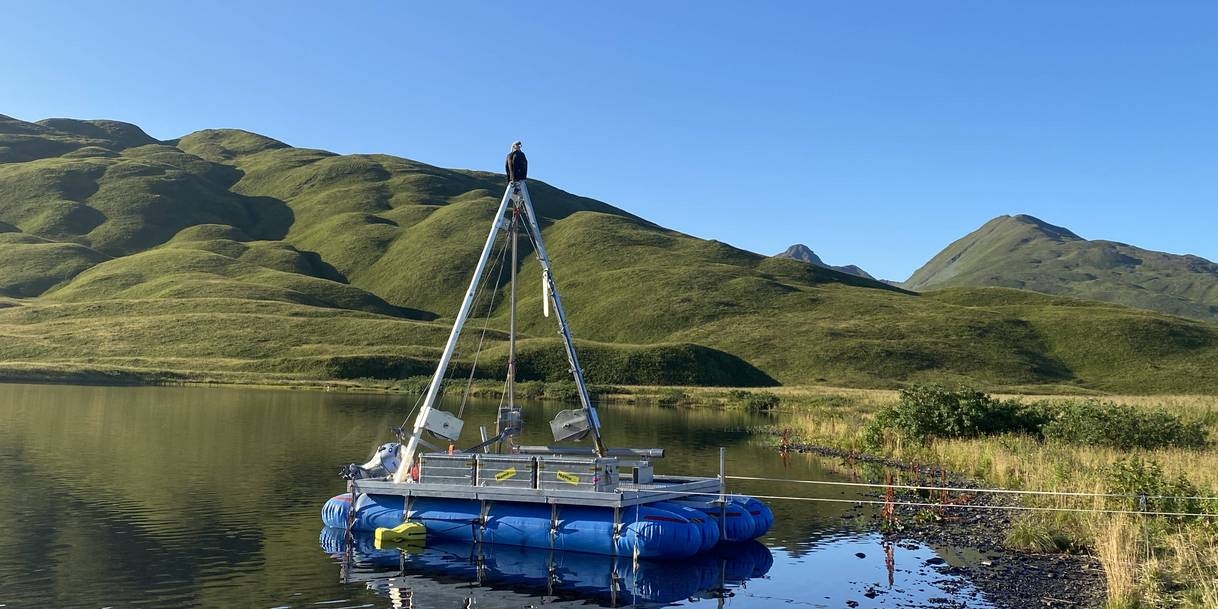We reach more than 65,000 registered users in Dec!! Register Now

Global warming and mass extinctions: What we can learn from plants from the last ice age
- August 02, 2025
- 1 Views
- 0 Likes
- 0 Comment
New analysis methods, applied to ancient plant DNA, reveal how hard-hit plants were and are by global warming
Global warming is producing a rapid loss of plant species – according to estimates, roughly 600 plant species have died out since 1750 – twice the number of animal species lost. But which species are hit hardest? And how does altered biodiversity actually affect interactions between plants? Experts from the Alfred Wegener Institute have tackled these questions and, in two recent studies, presented the answers they found buried in the past: using fragments of plant genetic material (DNA) deposited in lake sediments, they were able to gain new insights into how the composition of flora changed 15,000 to 11,000 years ago during the warming at the end of the last ice age, which is considered to be the last major mass extinction event before today. This comparison can offer an inkling of what might await us in the future. The researchers have just published their findings in the journal Nature Communications.
Temperature can change how plants interact
![[Translate to English:] Schwimmende Bohrplattform zur Entnahme von Sedimentkernen aus Seen, Alaska](https://www.awi.de/fileadmin/_processed_/4/1/csm_PM_Was_wir_von_Pflanzen_der_letzten_Eiszeit_lernen_k%C3%B6nnen_30012025_1_93cd8ac499.jpg)
What does that tell us about vegetation changes in the high latitudes, where cushion plants still play a pivotal role today? In today’s Arctic, this supportive quality could actually threaten their own survival. “Since the warming of the Arctic has already progressed quite far, woody plants can survive even in the high latitudes. The cushion plants could facilitate their spreading, hastening their own extinction in the process.”
Which plant species are particularly at risk?

This also allowed the experts to determine which species could be at the greatest risk of extinction in a warming world: grasses and shrubs are at a higher risk of disappearing than woody plant species, which can spread further when temperatures rise. In addition, species in regions with high biodiversity are more often at risk than are less “special” species. One surprising finding: the extinction rate was at its highest at the beginning of the current warm phase – often with a delay of several thousand years after the actual environmental changes. “That means the full impacts of today’s human activities might not become apparent until the distant future.”
Relevance for today’s Arctic
The results of the two studies offer fundamental insights into how environmental changes in connection with warming affect biodiversity, and which mechanisms are central in this regard. As such, for the first time the experts were able to determine extinction rates for plants, which can now be used as reference data to better assess the ongoing changes in Arctic ecosystems. “Our studies show how important it is to understand biodiversity and ecological interactions, also in the long term, in order to better predict the impacts of climate change,” Ulrike Herzschuh summarises. “Using the information locked in old DNA from sediments, we can gain the fundamental knowledge needed to do so.”
Further information:
Courtin, J., Stoof-Leichsenring, K. R., Lisovski, S., Liu, Y., Alsos, I. G., Biskaborn, B., K., Diekmann, B., Melles, M., Wagner B., Pestryakova, L., Russel, J., Huang, Y., Herzschuh, U. (2025). Potential plant extinctions with the loss of the Pleistocene mammoth steppe. Nature Communications (doi:10.1038/s41467-024-55542-x)
List of Referenes
Cite This Article as
No tags found for this post












